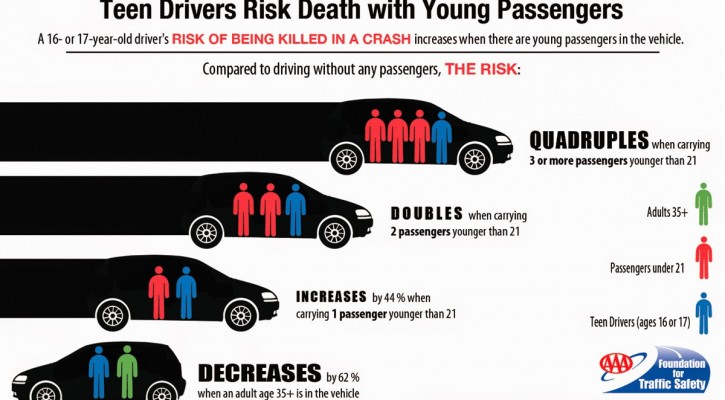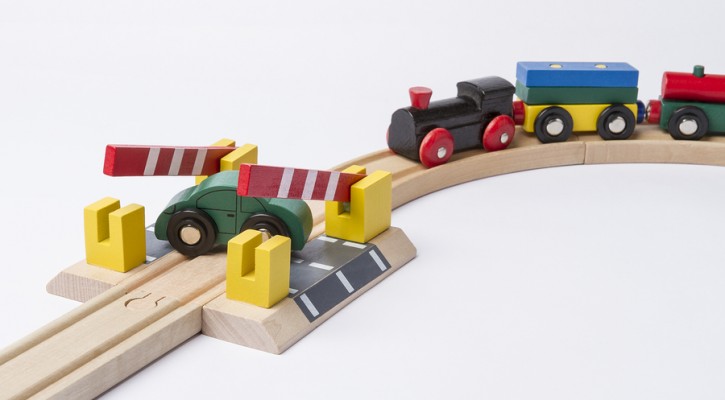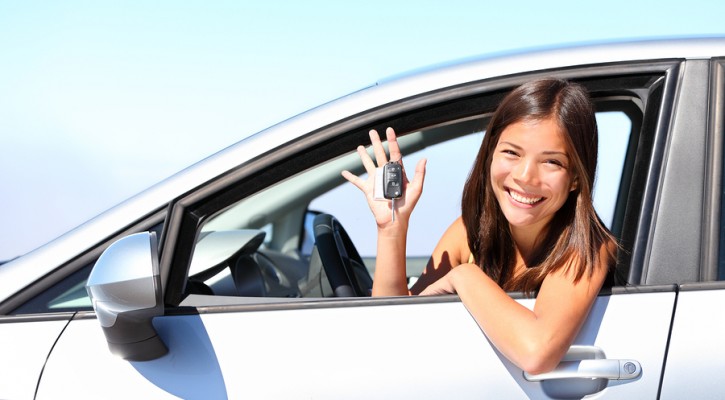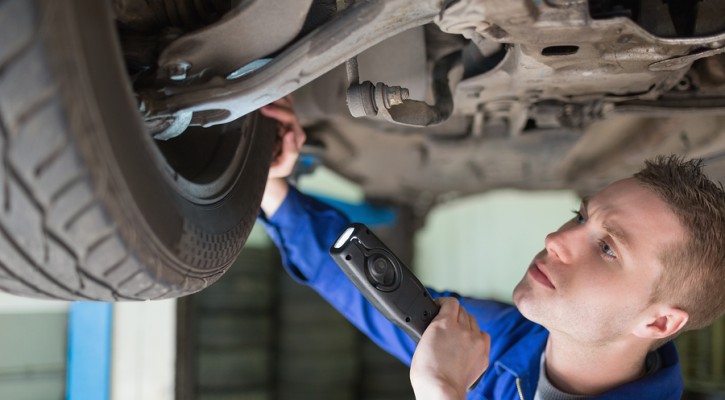
100 Deadliest Days For Teens: Infographic
July 3, 2014
The 100 day period between Memorial Day at the end of May and Labor Day at the beginning of September have historically been the deadliest period for teen drivers. Free time, lack of structure, boredom, alcohol, and distracting passengers all lead to a dangerous driving environment for teens. The infographic above shows the dangers posed when one or more teen passengers are carried by an inexperienced teen driver.

Teen Dies From Caffeine Overdose
July 1, 2014
A teen who was found dead five days before graduation died from a caffeine overdose. According to a coroner’s report, the teen had more than 70 micrograms of caffeine per milliliter of blood compared to three to 15 micrograms found in a typical energy drink. The teen, who apparently ordered the powdered form of the drug online, suffered cardiac arrhythmia and seizures brought on by ingesting the caffeine. According to a USA Today report, a 12 oz. cup of Starbucks coffee contains 260 milligrams of caffeine while a teaspoon of pure caffeine can contain up to 1600 milligrams. Read more: Autopsy finds Keystone senior died from caffeine overdose

Ask The Driving School Instructor: When Your Car Stalls On Train Tracks
June 30, 2014
Question: The driving manual says that if a car is stalled on the tracks and a collision is imminent to run toward the train. That doesn’t make any sense; why would you want to run toward the train?
Answer: If your car stalls on the railroad tracks and a train is about to hit your car, running in the direction of the train will protect you from being hit by your car and the crash debris. You want to run away from the tracks but in the direction of the train. Maybe this diagram will describe it better:
To avoid this from happening in the first place, never attempt to cross railroad tracks until there is enough clear space on the other side of the tracks for your vehicle to completely clear the tracks. Never attempt to go around a crossing gate once it is down. When the crossing alarm starts, the train will arrive within 20 seconds. Because they are so large, trains appear to be going slower than they actually are and, with all the weight of a train and at the speeds they are traveling, it can take up to a mile or more for the train to come to a complete stop. So, even if the engineer sees your car on the tracks, there is nothing he can do to stop in time.

Top Five Used Car Choices For Teens
June 27, 2014
The folks at Consumer Reports have compiled a list of the top five best used cars for teens. Teens experience a higher crash rate than adults due to their inexperience so, while also noting that family budgets are a big concern, they considered reliability and vehicles with lifesaving technologies to protect teen drivers in a crash. Technologies such as; electronic stability control (ESC), anti-lock brakes (ABS), and multi-stage advanced front airbags. They also suggested vehicle types to steer clear of. Read more: 5 best used cars for teen drivers

Ask The Driving School Instructor: Most Important Vehicle Control Device
June 24, 2014
Question: I saw a question that asked “What is the most important control device on a car or vehicle?” but I couldn’t find the answer. What is the most important control device?
Answer: Most people would answer the steering wheel or gas and brake pedals but none of those items are very effective at controlling a car if the tires aren’t in contact with the road. The tires are actually the most important control device on the car.
That portion of the tire that is in contact with the road is known as the tire’s “footprint.” The larger the footprint, the more control you have over the vehicle. If you are speeding, there’s an aerodynamic force on the car that makes the rear end rise up off the road, decreasing the tire’s footprint. If you should encounter a curve or an obstacle in the road, the smaller footprint could cause you to lose control of the car.
When driving on gravel roads, your tire’s footprint is even smaller because it is only in contact with the tips of rocks instead of the solid footprint that would be experienced on a paved road. It’s much easier to lose control of a vehicle on a gravel road so maintaining a lower speed is very important.
In heavy rain where there is standing water on the road, your tires may not be able to squeeze out all the water through the openings in the tread. In this situation, known as “hydroplaning”, the tires can ride up on top of the water like a water ski. In a hydroplaning situation, your tires will lose all contact with the road’s surface and you will lose control of the car. Hydroplaning can start at speeds as low as 35 mph but is more common at speeds above 55 mph. If you see standing water on the road, you should slow and keep a firm grip on the wheel. If you should hydroplane, don’t hit the brakes! Instead, take your foot off the gas and steer the car in the direction you want it to go until the car slows on its own.
It’s also very important to make sure the tires on your vehicle are in good shape and inflated to the proper pressure. If they are bald, they won’t be able to grip the road very well. The best way to tell if your tires are in good shape is to use the penny test. Stick a penny into the tread of the car. If you can see the top of Lincoln’s head, your tires are worn too low and should be changed.
